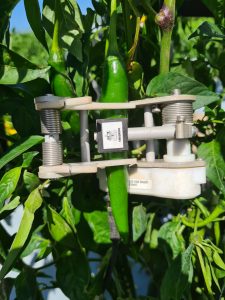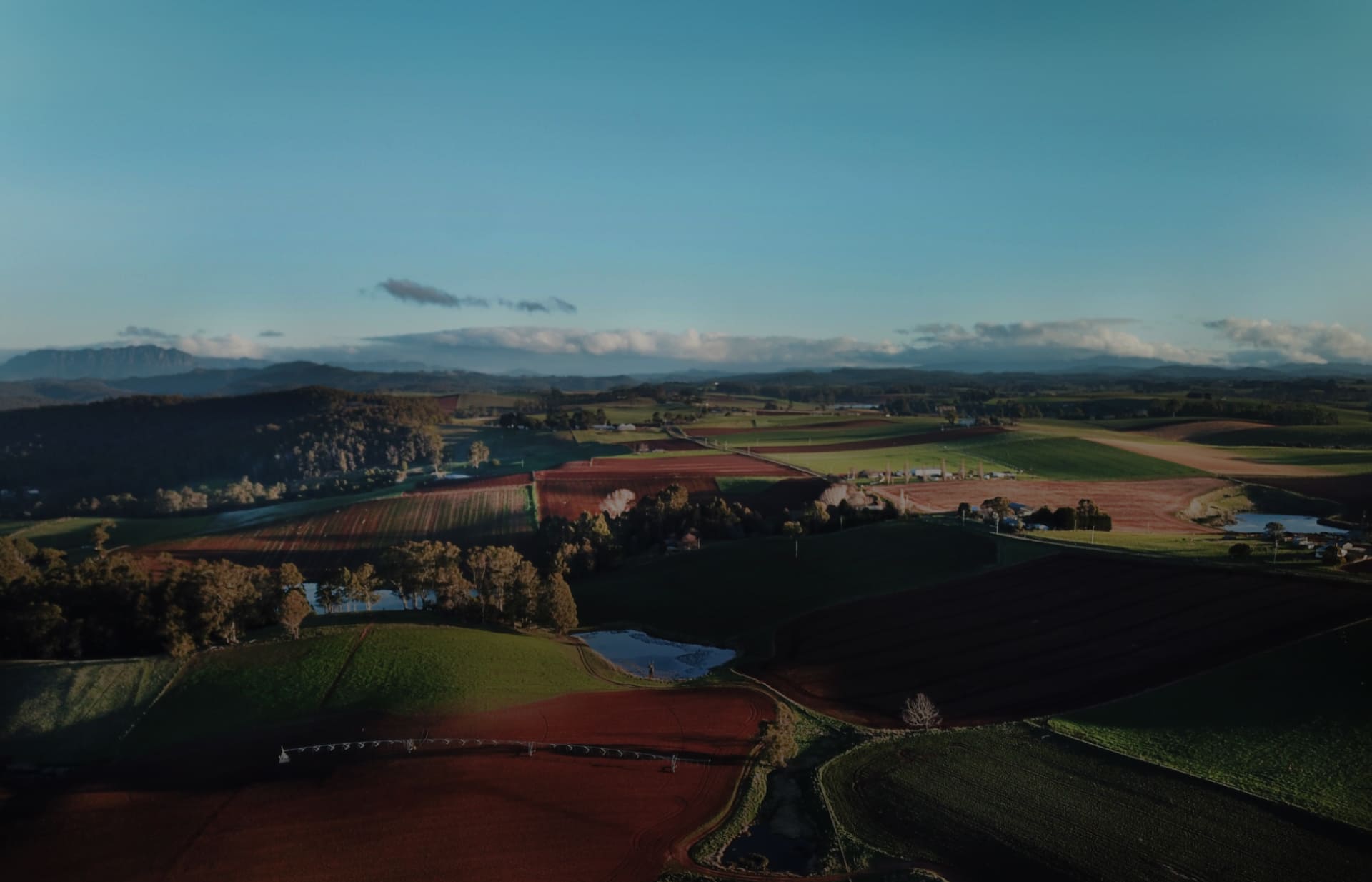Weed management resources now available to veg growers
Understanding and managing the role of honey bees in CGMMV epidemiology
Seminar aiming to educate and inspire veg growers
Protecting Australia’s honey bee population through enhanced surveillance
Ground-breaking multi-industry export program set to commence
Pest and disease preparedness: How to protect your farm
Passion for soils leads to hosting Top End demonstration site
A pilot ‘Smart Farm’ is using novel sensors and multiple streams of data to develop a system to help vegetable growers farm more efficiently, maintain records for certification and better understand their crops. The trial is located in Bundaberg at the property of Australia’s largest chilli producer, Austchilli. Ian Thomas reports.
The pilot ‘Smart Farm’ at Austchilli is a hive of activity, and systems are being developed to deliver information to the farm managers in real time. This replaces the need to manually collect sensor data.
This trial is part of Digital remote monitoring to improve horticulture’s environmental performance. This project is being delivered by Hort Innovation – with support from the Australian Government Department of Agriculture, Water and the Environment as part of it’s the National Landcare Smart Farming Partnerships Program – and is a strategic levy investment under the Hort Innovation Nursery Fund. It is a collaboration between Applied Horticultural Research (AHR), Hitachi, Freshcare, Growcom, Greenlife Industry Australia, the Australian Banana Growers Council, Avocados Australia, AUSVEG and Austchilli.
While researchers at AHR are assisting the farm managers with the installation and operation of the sensors, a team of developers at Hitachi are incorporating the data outputs into a unified easy to understand digital dashboard.

A dendrometer attached to growing chilli to track plant growth cycles. Image courtesy of Henry Hyde from Applied Horticultural Research.
The goal of the project to create a system where farm management decisions are not made based on one single metric or source of data. As Austchilli owner David De Paoli says, it’s not about any one sensor – but the complete system.
“Each unit plays its part in data gathering to give you the whole picture. This then drives the automation,” he says.
Austchilli is one of the pilot farms participating in the investigation and use of various digital monitoring methods, and David and his technical staff have been pivotal in ensuring this project is pointed to deliver commercial outcomes for the avocado and vegetable industries.
How it works
Current sensors operating on the Smart Farm include soil moisture, pH and electrical conductivity, a weather station, and in-field high-definition cameras to monitor vital crop growth stages. A variety of new sensors have recently been added to measure leaching of nutrients and ground run-off.
New, and sometimes novel, sensors have been integrated into the system since the establishment of the farm. A notable new inclusion is a dendrometer, which typically is used to measure miniscule contraction and expansions in the trunks of tree crops, placed onto a growing chilli fruit.
The data from this sensor will provide a better understanding and record of plant transpiration and growth rates and assist in irrigation and nutrient applications. As the sensor data is collected over multiple crops, the record will provide an in valuable record for understanding yearly differences in crop performance and yield.
Sustainability focus
The project is also looking into ways of automating recording keeping for certification systems, such as Freshcare Environmental and the Hort 360 Reef Certification.
Automating the complicated process of record keeping for environmental record-keeping will likely become an important cost-saving tool as more growers look to do their part in maintaining Australia’s environmental standards.
David is hopeful that the system being developed will begin being used in real-time farm decision making within the year.
An audit of the efficiency of the pilot Smart Farm inputs will be conducted once all the monitoring system have been integrated into the digital dashboard. However, the project still has a long way to go before reaching its goals.
“My staff are currently using the data now but there is still human decision-making in the delivery of inputs,” David says.
“It’s now not a guess – it’s real data in real time. With the automation controlling the inputs, I can rest easy knowing that if its Friday afternoon or the weekend, attention to detail will continue and I won’t get fruit drop or blossom end rot.”
Find out more
Please contact AUSVEG Project Officer Ian Thomas at ian.thomas@ausveg.com.au or phone 03 9882 0277.
This project is funded by Hort Innovation using the nursery research and development levy and contributions from the Australian Government.
Project Number: ST19024

